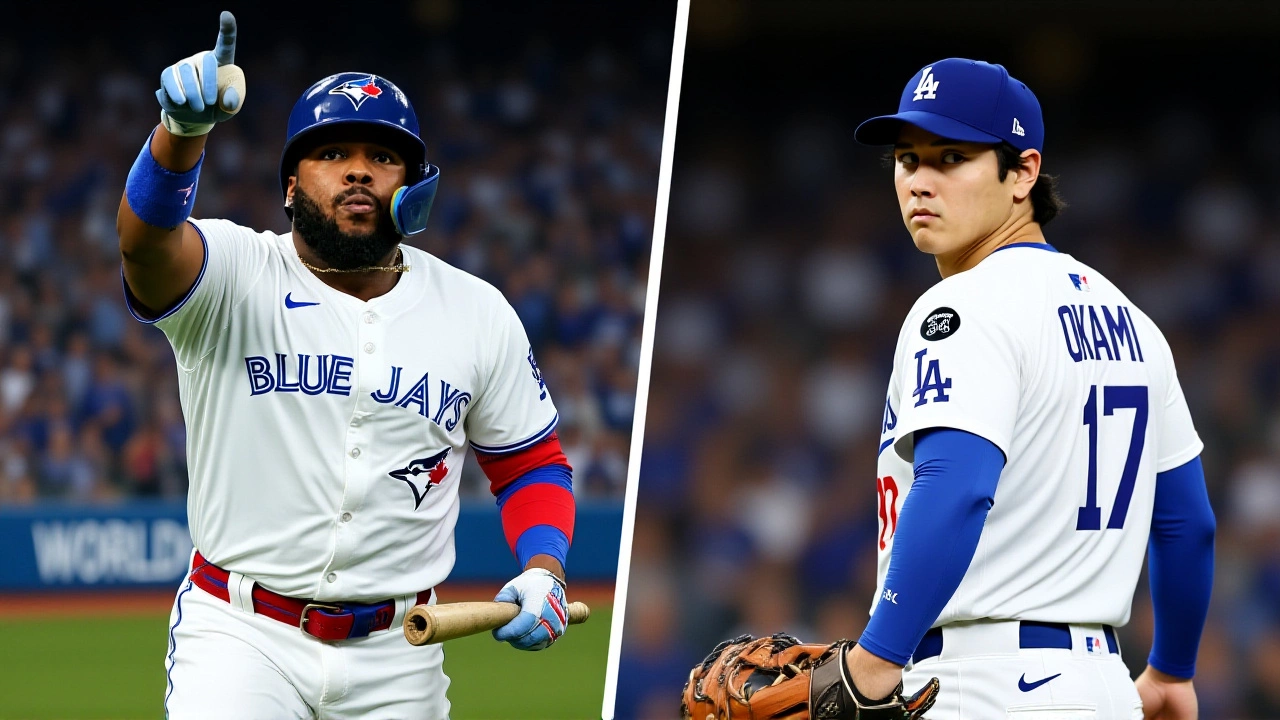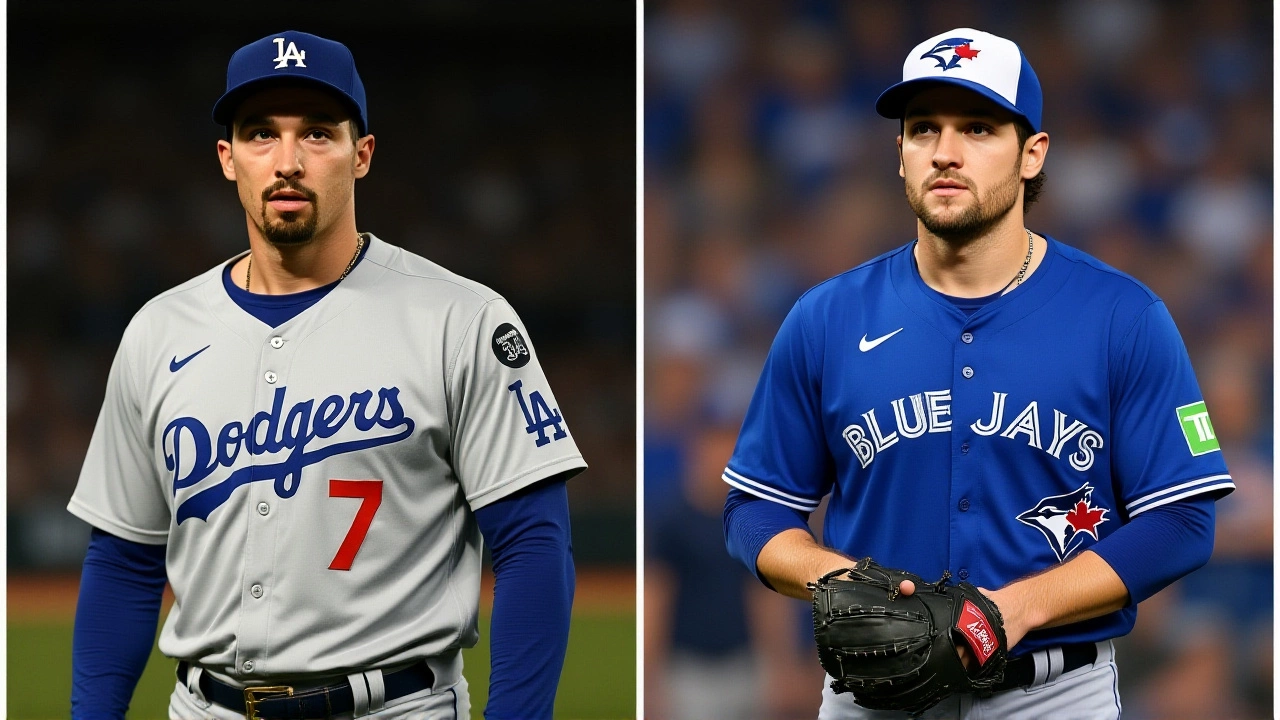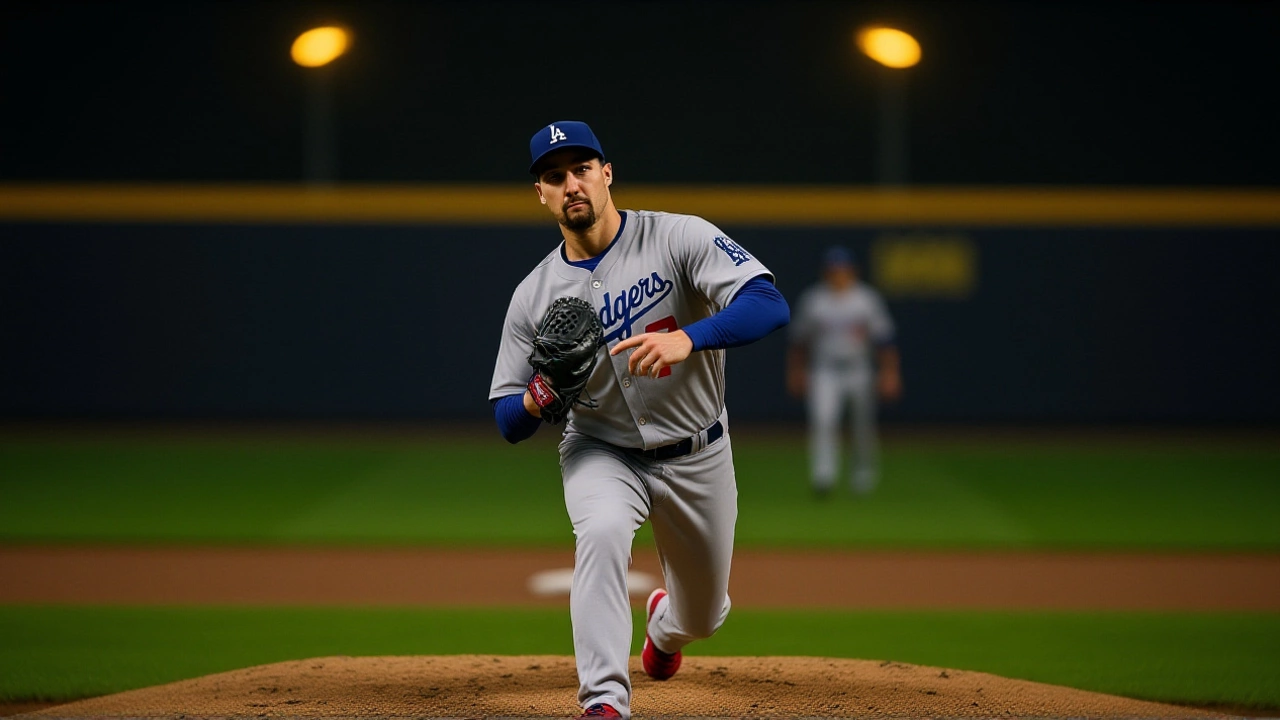When Blake Snell, the four‑time All‑Star left‑hander, was announced as the Game 1 starter for the World Series, fans of the Los Angeles Dodgers breathed a collective sigh of relief. The opening showdown will take place Friday, October 24, 2025, at 8:00 p.m. Eastern Time inside Rogers Centre, the home of the Toronto Blue Jays. Dodgers president of baseball operations Andrew Friedman said the rotation’s depth is the cornerstone of what he calls a ‘postseason powerhouse.’
Rotation Overview: Numbers That Talk
The Dodgers’ four‑man rotation—Snell, Japanese ace Yoshinobu Yamamoto, veteran right‑hander Tyler Glasnow and two‑way phenom Shohei Ohtani—has logged a microscopic 1.40 ERA across ten postseason starts. That translates to 81 strikeouts and a league‑low .132 opponent batting average. In fact, whenever a Dodgers starter has thrown five innings or more this postseason, the club is 9‑0.
- Snell: 0.86 ERA, 12.0 K/9 over 21 postseason innings.
- Yamamoto: 1.83 ERA, 18 strikeouts in 19 ¾ innings.
- Glasnow: 1.55 ERA, 22 strikeouts in 23 innings.
- Ohtani: 2.10 ERA on the mound, plus .285 batting average.
Those figures are the product of a rotation that has shouldered roughly 70 % of the Dodgers’ innings since the Wild Card round.
How the Dodgers Got Here
Los Angeles swept the Milwaukee Brewers in the National League Championship Series, surrendering just two earned runs in four games. Manager Dave Roberts praised the staff’s “laser‑like focus” after the NLCS press conference on October 22, 2025. The club’s 26‑man World Series roster, announced on October 23, includes 12 pitchers and marks the final series for Hall‑of‑Famer Clayton Kershaw, who will close out his storied career on the mound in Toronto.
Key Pitchers Spotlight
Blake Snell signed a five‑year, $182 million deal in the 2024‑25 offseason. After a 60‑day IL stint in April, he returned in August and never looked back, posting a sub‑1.00 ERA in the regular season’s final two months. For Game 1, he will face right‑hander Trey Yesavage of the Blue Jays, a 24‑year‑old who has posted a 3.45 ERA in the regular season.
Yamamoto logged 173 ¾ innings during the regular season, striking out 201 batters. In the postseason he’s become the most durable arm, never missing a start and keeping his walk total under five.
Glasnow continues to ride the wave of his 2024 breakout, delivering high‑velocity fastballs that average 98 mph. His postseason composure has been a surprise to skeptics who questioned his durability after a shoulder tweak in 2023.
Ohtani remains a unique asset. Though his innings on the mound are limited, his offensive contributions have forced opposing managers to juggle lineups, essentially giving the Dodgers an extra bat.

Blue Jays Matchup and Series Outlook
Toronto entered the Series with a 92‑70 regular‑season record, led by a staff anchored by starter Chris Flexen (not marked as primary) and ace Julio Urías. The Blue Jays have leaned heavily on their bullpen, which posted a 2.87 ERA over the ALCS. Yet the Dodgers’ rotation advantage—highlighted by the sub‑1.5 ERA collective—means the early games could tilt heavily in LA’s favor.
Game 1 will likely become a pitch‑count duel; Snell’s fastball sits at 92‑94 mph, while Yesavage relies more on command and a sharp breaking ball. Analysts predict a low‑scoring affair, with the first run possibly coming from Ohtani’s bat in later innings.
Roster Moves, Injuries and Depth
The Dodgers omitted reliever Alex Vesia due to a “deeply personal family matter” involving his wife, Kayla. Rookie right‑hander Roki Sasaki has been a bright spot, allowing just one run in eight postseason innings. Veteran arm Blake Treinen struggled with a 7.36 ERA, raising questions about his role in later games.
Should Vesia be placed on the medical emergency list, MLB rules allow a three‑ to seven‑day window for a return, meaning he could be eligible for Game 3 at Dodger Stadium.

What’s Next: Looking Beyond Game 1
After the Friday night opener, the series shifts back to Los Angeles for Games 3‑5, beginning Monday, October 27, 2025, at Dodger Stadium. The Dodgers will rotate Yamamoto, Glasnow and Ohtani in that order, preserving Snell’s arm for a potential Game 7. If the rotation maintains its sub‑2.00 ERA, the Dodgers are poised to capture their eighth championship.
Frequently Asked Questions
How does the Dodgers’ rotation give them an edge over the Blue Jays?
The four starters combined for a 1.40 ERA and 81 strikeouts in ten postseason starts, a rate that dwarfs the Blue Jays’ staff ERA of 3.02. Their ability to pitch deep into games also keeps the bullpen fresh, which is crucial in a best‑of‑seven format.
What impact could Alex Vesia’s personal situation have on the Dodgers?
If Vesia is placed on the medical emergency list, the team could activate him after a three‑day minimum. That timeline would make him eligible for Game 3, giving the Dodgers a fresh right‑hand arm and potentially stabilizing a bullpen that has struggled in earlier outings.
Why is Blake Snell’s start considered pivotal?
Snell’s 0.86 ERA and 12.0 K/9 in the postseason demonstrate he can dominate high‑pressure situations. A strong opening performance not only sets the tone but also forces Toronto to use its top reliever early, potentially limiting their late‑game options.
What does Shohei Ohtani bring beyond pitching?
Ohtani’s presence in the lineup adds a .285 batting average and 18 RBIs in the postseason so far. His dual role forces the Blue Jays to juggle defensive alignments, creating extra opportunities for the Dodgers’ hitters.
When and where will the remaining games be played?
Games 3, 4 and 5 shift to Dodger Stadium in Los Angeles, California, with Game 3 slated for Monday, October 27, 2025, at 7:30 p.m. Pacific Time. If the series extends, Game 6 returns to Rogers Centre, and a potential Game 7 would be played in Los Angeles.
